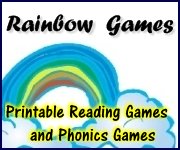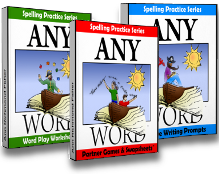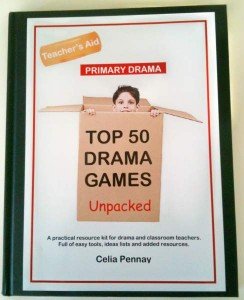How to Write a Review: So What Did You Think of That Movie?
Know how to write a review? Whether you want to teach your class to write a review for a website posting or the school paper, here are three helpful lessons. Usually published in a newspaper or magazine (both online and off!), a review is a written piece that evaluates a book, play, concert, movie, television show, or other event. A review states the author's opinion in an attempt to persuade the reader to watch, read, or avoid the item.
Usually published in a newspaper or magazine (both online and off!), a review is a written piece that evaluates a book, play, concert, movie, television show, or other event. A review states the author's opinion in an attempt to persuade the reader to watch, read, or avoid the item.
The fun thing about teaching how to write a review? Kids can turn their favorite television shows, movies, and music into eager homework assignments!
In the following three lessons, we'll look at the elements of a review, transitions between thoughts, and understanding the audience.
Let's get started learning how to write a review.
Lesson 1: How to Write a Review Using the Elements of a Balanced Perspective
- Step 1: Make arrangements for your class to see a performance. This might be a stage play, a puppet show, a band concert, or something as simple as showing a film in the classroom.
- Step 2: Explain that there are five main parts to a review: the title and thesis statement, positive and negative examples from the subject, and a conclusion. As in any form of persuasive writing, a review contains a topic, an opinion, and a suggestion for readers.
- Step 3: Have students complete written notes or answers to the following questions, based upon the performance they've seen:
- Title:
- What was the purpose of the play, movie, or show?
- What did you like about the play, movie, or show?
- What might someone your age think of the play, movie, or show?
- What might an older person (such as a parent, teacher, or adult friend) think of the play, movie, or show?
- Give three opinion statements about the play, movie, or show (ie, I liked/disliked the movie because...)


Now that your students have a basic set of notes for writing a balanced review, keep these written notes handy for the next lesson.
Lesson 2: How to Write a Review Using Transitions
- Step 1: Beforehand, prepare several paragraphs that emphasize the use of transitional words and phrases. Use the following as a model. For convenience, I've bolded the five transitions in this example:
- As a child, I watched a movie about the Great Depression. Consequently, I had many ideas in my mind about this period in American history. When we studied the Great Depression in school, I already knew a number of things about it. To emphasize just how much I knew by sixth grade, I could list several causes of the Great Depression. As a result of this, I was able to participate more fully in class. Obviously, my interest in the Great Depression continues because of my early exposure.
- Step 2: Place transparencies of your paragraphs on an overhead projector. Ask students if they can identify the transitional words and phrases within each paragraph. Discuss with your class how transitional words lead a reader to the next step, helping weave information, sentences, and paragraphs together.
- Step 3: Distribute lists of common transitional words and phrases. Good lists can be found online or in most English grammar textbooks. Explain to your class that they'll use these lists in conjunction with their notes from the previous lesson. They'll use transitional phrases to link examples together as they write reviews.
Lesson 3: Learning How to Write a Review Means Understanding the Audience
- Step 1: With your class, read a review from the local newspaper. Have your students determine the following:
- What is the subject of the review?
- Did the review determine that the subject was good or bad?
- Now, think about the audience of the review. Who was the review written to? How can you tell?
- Step 2: Explain to students that it is important to remember to whom they are writing. Writers change their tone, vocabulary, and reasoning based on their intended audience.
- Step 3: Distribute a copy of the following review organizer to your students, or make a transparency for the overhead projector. Have students use this outline to organize their notes from the performance in Lesson 1. Remind them to incorporate appropriate transitions to link paragraphs and information together:
- Subject of review
- Title of review
- Thesis statement
- Supporting statements and examples
- Supporting statements and examples
- Supporting statements and examples
- Conclusion
- When your students have completed rough drafts of their reviews, have them exchange these drafts with partners for editing and proofreading. Revise and rewrite into polished final copies. Select a few for publication in the local newspaper!

Now that your students know how to write a review, assign a review for their favorite movie, television show, or music! As an instructor, you'll learn a lot about your kids!
Return from How to Write a Review to Creative Writing Lesson Plans
Return from How to Write a Review to Creative Writing Ideas and Activities
Helping You Write Across the Curriculum!
copyright 2009-2013 www.creative-writing-ideas-and-activities.com
Our Most Popular Pages
5. Writing a Personal Narritive
10. Elements of Persuasive Writing
Recommeded Resources:
AnyWord(TM) Spelling Practice Series!
Worksheets, games and activities to use with any spelling words. Three volumes in all!
Stop Essay Pain!
LitWorks.com
Resources to help students prepare for literature examinations.
Teach Kids Drama!








